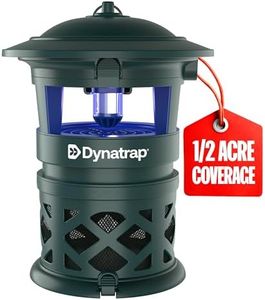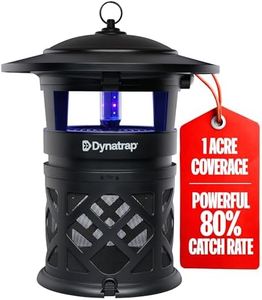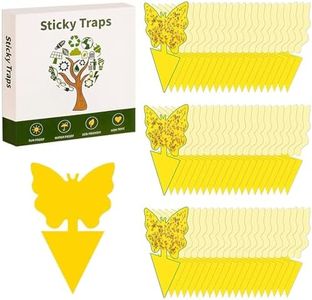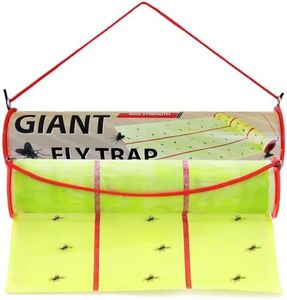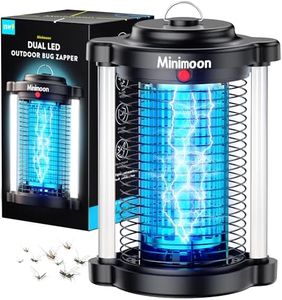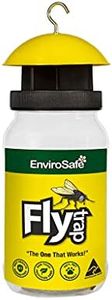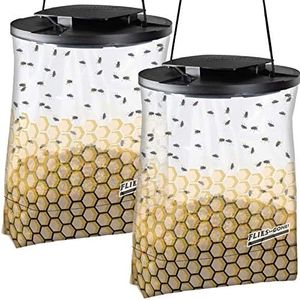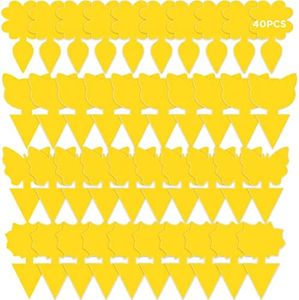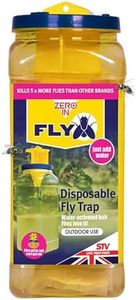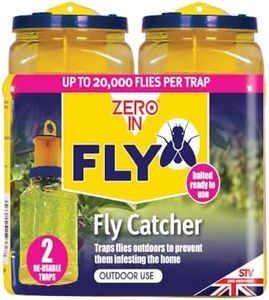We Use CookiesWe use cookies to enhance the security, performance,
functionality and for analytical and promotional activities. By continuing to browse this site you
are agreeing to our privacy policy
10 Best Outdoor Fly Traps
From leading brands and best sellers available on the web.Buying Guide for the Best Outdoor Fly Traps
Choosing the right outdoor fly trap involves thinking about where you’ll use it, what kinds of flies are a problem, and how easy you want maintenance to be. Outdoor environments have different levels of insect activity, so matching the trap to your specific need can greatly improve results. Consider where you’ll place the trap and how much effort you’re willing to spend dealing with it, as these factors will guide you to the best choice for your situation.Trap TypeThere are several types of outdoor fly traps, including baited traps, sticky traps, and electric or zapping traps. The type of trap refers to how it attracts and captures flies. Baited traps use lures to attract flies, sticky traps catch them on an adhesive surface, and electric traps zap them when they approach. Baited traps are good for larger areas with high fly activity; sticky traps are best for smaller spaces or to monitor fly presence; and electric traps work well for patios or places where you want instant results. Your need—number of flies, safety for pets, or specific locations—will help you choose the right type.
Coverage AreaThe coverage area tells you how much space a trap can protect effectively. Smaller traps may cover about 50-100 square feet, while larger ones or electric traps can cover from a few hundred to over a thousand square feet. If you need to protect a large backyard or a spacious patio, opt for traps with a bigger coverage area. For a small balcony or focused spot, a lower coverage trap will be sufficient and more practical.
Bait Type or AttractantThe bait or attractant is what draws flies into the trap. Some traps use scented lures, while others use food-based attractants. Scented lures are often strong and work well outdoors, but may have a noticeable odor. Food-based attractants can be safer for pets and children but might attract other insects as well. If you are sensitive to smells or have young kids and pets, pick traps with milder or natural baits. For tough fly infestations, more potent attractants will usually give better results.
Ease of Disposal and MaintenanceMaintenance includes how often you need to empty or replace parts of the trap. Some traps are disposable and can be thrown out completely when full, while others are reusable with replaceable bait or sticky pads. Disposable traps are more convenient if you want minimal maintenance, but reusable traps generate less waste and can be cheaper in the long run. If you have a busy schedule or dislike handling bugs, choose a trap that is easy and clean to maintain.
Weather ResistanceOutdoor traps need to withstand different weather conditions like rain, wind, and sun. Some traps are designed to handle all-weather use, while others might work best only under cover. If you plan to use your trap in an exposed garden or yard, check that it is weather-resistant so it won’t break down or lose effectiveness. For areas covered by patios or awnings, this feature is less critical, but always make sure your trap is suited for the typical outdoors environment in your region.
Safety for Pets and WildlifeDepending on where you live, your fly trap might be within reach of pets or local wildlife. Some traps are non-toxic and safe, while others may use chemicals or have electric elements that could be harmful. If you have pets or frequent wildlife, go for traps that are sealed, non-toxic, or have protective coverings. Your own environment and concerns for animal safety should guide you to the right choice.
